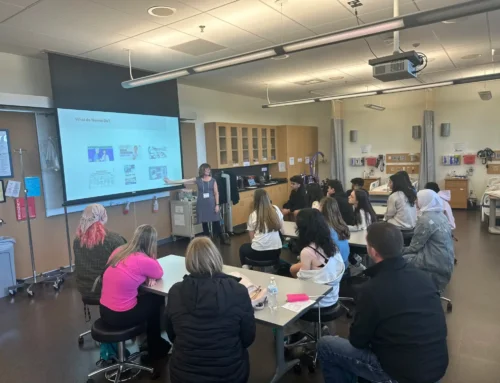This past spring as school districts responded to the COVID-19 crisis with emergency remote learning, they made decisions that addressed our communities’ immediate needs. District teams had to process new information and implement change at a rapid pace. Districts needed to quickly adjust their methods as new information emerged. Because of the unique and unprecedented circumstances, the new process was often imperfect.
Over the past several months, I have learned that in a virtual teaching environment, developing strong teams for shared decision-making is both challenging and necessary. As educators learned new teaching models, adapted delivery options, and navigated community concerns, I realized that we best serve our staff, students, and families with a team-building plan that includes:
- Rapid, informed cycles of change
- Focused goals
- Inclusive action steps
Team Characteristics – Are the right people at the table?
Having the right team in place is perhaps more important now than ever. We all need team members who can inform, understand, and communicate actions with a calm and positive mindset.
You form teams quickly and adjust them often. (Education Elements, Natalie Hall, May 2020).
Putting this quote into practice demonstrates a shared vision and a value for the expertise of staff members. Your staff and community need to understand that each member has a contribution to the success of the process – asset-based teaming.
It is crucial for all roles to be looped in and to have meaningful access to each other, not only for decision-making but for brainstorming and healthy debate. Empower the team and cultivate an environment of encouraging collaboration and skilled problem-solving. (Team Collaboration and Closing Efficiency Gaps in Responsive, Brian Krall, Design 2014)
Team Responsiveness – Building in time for intentional reflection
Oftentimes, when there is a strong sense of urgency, we think there is no time to hit the pause button. However, reflection is often the most important phase of the iterative cycle; when we learn and inform adjustments to action steps that better meet our needs and move us toward our vision. We have learned from studies around the art of improvement that iterative learning cycles are the strongest way to impact the change we want to see.
Team Care – Reach out, check-in, make contact
During times of uncertainty, staff members can feel more disconnected and possibly less motivated. Schools and classrooms will be more resilient and flexible if our leaders can adapt expectations and focus on supporting the well-being of employees. When our leaders acknowledge that things are not normal, they simultaneously demonstrate team care.
Ensuring the well-being of your team members is essential to the overall team vision. Some examples of ways you can check the well-being of your team include:
- Reach out, check-in, and make contact
- Communicate consistently and frequently
- Develop shared methods for connecting with other staff, ensuring all staff are part of the team
- Be transparent especially about concerning news
- Model self and family care
- Allow flexible work schedules
- Use asynchronous work methods
- Connect to resources and supports outside of your organization regional/state workgroups/PLCs
Resources:
- https://www.edelements.com/blog/3-ways-to-tell-you-lead-a-responsive-team-in-times-of-crisis
- https://www.smashingmagazine.com/2014/05/team-collaboration-closing-efficiency-gaps-responsive-design/
- https://doist.com/blog/team-productivity-crisis/
- https://hbr.org/2020/03/are-you-leading-through-the-crisis-or-managing-the-response




